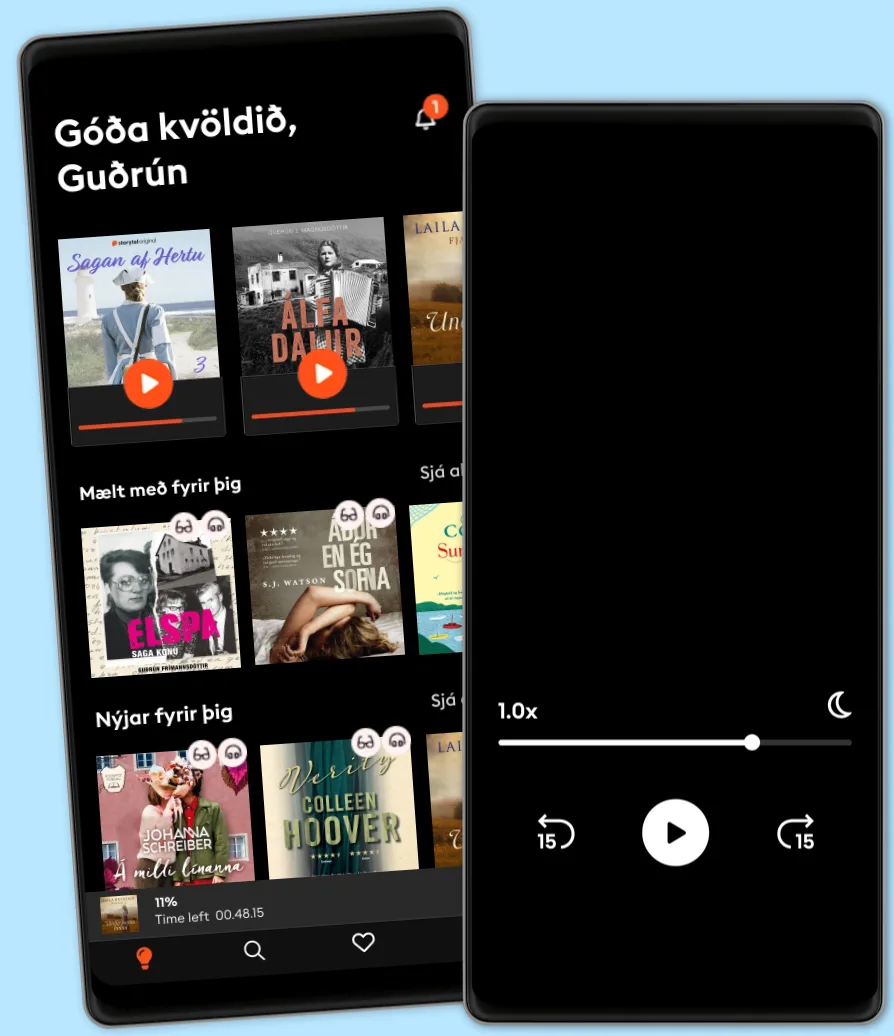Hlustaðu og lestu
Stígðu inn í heim af óteljandi sögum
- Lestu og hlustaðu eins mikið og þú vilt
- Þúsundir titla
- Getur sagt upp hvenær sem er
- Engin skuldbinding

Egon Schiele
- Eftir
- Útgefandi
- Tungumál
- enska
- Snið
- Bókaflokkur
Óskáldað efni
Egon Schiele’s work is so distinctive that it resists categorisation. Admitted to the Vienna Academy of Fine Arts at just sixteen, he was an extraordinarily precocious artist, whose consummate skill in the manipulation of line, above all, lent a taut expressivity to all his work. Profoundly convinced of his own significance as an artist, Schiele achieved more in his abruptly curtailed youth than many other artists achieved in a full lifetime. His roots were in the Jugendstil of the Viennese Secession movement. Like a whole generation, he came under the overwhelming influence of Vienna’s most charismatic and celebrated artist, Gustav Klimt. In turn, Klimt recognised Schiele’s outstanding talent and supported the young artist, who within just a couple of years, was already breaking away from his mentor’s decorative sensuality. Beginning with an intense period of creativity around 1910, Schiele embarked on an unflinching exposé of the human form – not the least his own – so penetrating that it is clear he was examining an anatomy more psychological, spiritual and emotional than physical. He painted many townscapes, landscapes, formal portraits and allegorical subjects, but it was his extremely candid works on paper, which are sometimes overtly erotic, together with his penchant for using under-age models that made Schiele vulnerable to censorious morality. In 1912, he was imprisoned on suspicion of a series of offences including kidnapping, rape and public immorality. The most serious charges (all but that of public immorality) were dropped, but Schiele spent around three despairing weeks in prison. Expressionist circles in Germany gave a lukewarm reception to Schiele’s work. His compatriot, Kokoschka, fared much better there. While he admired the Munich artists of Der Blaue Reiter, for example, they rebuffed him. Later, during the First World War, his work became better known and in 1916 he was featured in an issue of the left-wing, Berlin-based Expressionist magazine Die Aktion. Schiele was an acquired taste. From an early stage he was regarded as a genius. This won him the support of a small group of long-suffering collectors and admirers but, nonetheless, for several years of his life his finances were precarious. He was often in debt and sometimes he was forced to use cheap materials, painting on brown wrapping paper or cardboard instead of artists’ paper or canvas. It was only in 1918 that he enjoyed his first substantial public success in Vienna. Tragically, a short time later, he and his wife Edith were struck down by the massive influenza epidemic of 1918 that had just killed Klimt and millions of other victims, and they died within days of one another. Schiele was just twenty-eight years old.
© 2024 Parkstone International (Rafbók): 9781783102846
Útgáfudagur
Rafbók: 5 juni 2024
Merki
Aðrir höfðu einnig áhuga á...
- Gustave Courbet Georges Riat
- Romanesque Art Victoria Charles
- James McNeill Whistler Patrick Chaleyssin
- Pierre-Auguste Renoir and artworks Natalia Brodskaya
- Botticelli Émile Gebhart
- The ultimate book on Raphael Eugène Müntz
- The Brueghels Victoria Charles
- Félix Vallotton Nathalia Brodskaïa
- Naive Art Nathalia Brodskaïa
- Gustave Courbet and artworks Patrick Bade
- Hokusai Edmond de Goncourt
- Romanesque Art Klaus Carl
- Diego Rivera and artworks Gerry Souter
- 1000 Buddhas of Genius Victoria Charles
- Self-Portraiture: The Art of Self–Research Nurit Cederboum
- Rembrandt Klaus Carl
- Lucas Cranach the elder Alexander Stepanov
- Impressions of Ukiyo-E Dora Amsden
- Claude Monet: Vol 1 Nathalia Brodskaïa
- 1000 Watercolours of Genius Victoria Charles
- Paul Signac and artworks Paul Signac
- Klimt Patrick Bade
- Walker Evans: Starting from Scratch Svetlana Alpers
- Frida Kahlo and artworks Gerry Souter
- Chagall and artworks Sylvie Forestier
- Symbolism Nathalia Brodskaïa
- American Realism Gerry Souter
- 1000 Monuments of Genius Christopher E.M. Pearson
- Art of the Devil Arturo Graf
- 1000 Sculptures of Genius Patrick Bade
- American Jesuits and the World: How an Embattled Religious Order Made Modern Catholicism Global John T. McGreevy
- Bróðir minn í 75 pörtum Sebastian Richelsen
4.2
- Undirferli Lone Theils
4.1
- Farþeginn Árni Þórarinsson
4.2
- Hyldýpið Torill Thorup
4.3
- Hildur Satu Rämö
4.3
- Vetrarborgin Arnaldur Indriðason
4.3
- Hjartabein Colleen Hoover
4.3
- Þvingun Jónína Leósdóttir
3.8
- Ég ætla að djamma þar til ég drepst Ívar Örn Katrínarson
4.4
- Lára missir tönn Birgitta Haukdal
4.6
- Arftaki bómullarverksmiðjunnar Ann-Christin Antell
4.3
- DNA: Reykjavík 112 Yrsa Sigurðardóttir
4.3
- Lofaðu mér því Jill Mansell
4.1
- Svívirt Torill Thorup
4.3
- Biðlund Nora Roberts
3.8
Veldu áskrift
Yfir 900.000 hljóð- og rafbækur
Yfir 400 titlar frá Storytel Original
Barnvænt viðmót með Kids Mode
Vistaðu bækurnar fyrir ferðalögin
Unlimited
Besti valkosturinn fyrir einn notanda
1 aðgangur
Ótakmörkuð hlustun
Yfir 900.000 hljóð- og rafbækur
Engin skuldbinding
Getur sagt upp hvenær sem er
Family
Fyrir þau sem vilja deila sögum með fjölskyldu og vinum.
2-6 aðgangar
100 klst/mán fyrir hvern aðgang
Yfir 900.000 hljóð- og rafbækur
Engin skuldbinding
Getur sagt upp hvenær sem er
2 aðgangar
3990 kr /á mánuðiÍslenska
Ísland